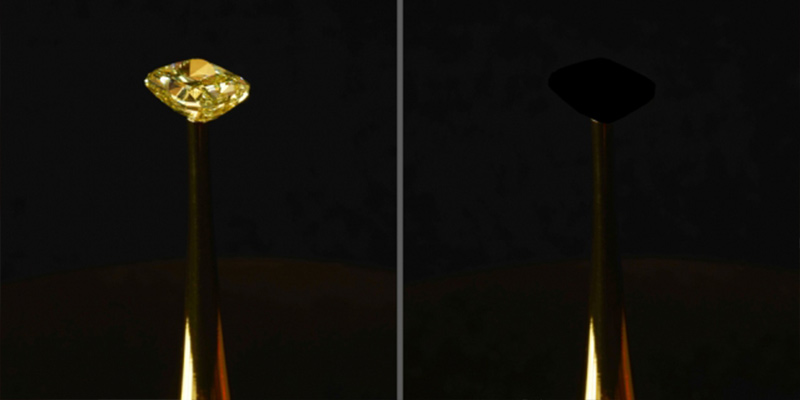- World
- Sep 17
Scientists develop ‘blackest’ material
Scientists at the Massachusetts Institute of Technology (MIT) claim to have developed a material that is 10 times blacker than anything that has previously been reported.
The material is made from vertically aligned carbon nanotubes, or CNTs - microscopic filaments of carbon that the team grew on the surface of a chlorine-etched aluminum foil.
The foil captures more than 99.96 per cent of any incoming light, making it the blackest material on record, according to the findings published in the journal ACS-Applied Materials and Interfaces.
An artwork was exhibited featuring a 16.78-carat natural yellow diamond, which the team coated with the new, ultrablack CNT material. The effect is arresting: The gem, normally brilliantly faceted, appears as a flat, black void.
An accidental discovery
Brian Wardle, a professor at MIT, and former MIT postdoc Kehang Cui, now a professor at Shanghai Jiao Tong University in China, didn’t intend to engineer an ultrablack material.
Instead, they were experimenting with ways to grow carbon nanotubes on electrically conducting materials such as aluminium, to boost their electrical and thermal properties.
“I remember noticing how black it was before growing carbon nanotubes on it, and then after growth, it looked even darker,” Cui said.
They measured the amount of light reflected by the material, not just from directly overhead, but also from every other possible angle. The results showed that the material absorbed at least 99.995 per cent of incoming light, from every angle.
In other words, it reflected 10 times less light than all other superblack materials, including Vantablack. If the material contained bumps or ridges, or features of any kind, no matter what angle it was viewed from, these features would be invisible, obscured in a void of black.
They are not entirely sure of the mechanism contributing to the material’s opacity, but they suspect that it may have something to do with the combination of etched aluminium, which is somewhat blackened, with the carbon nanotubes.
Optical and space science applications
“There are optical and space science applications for very black materials, and of course, artists have been interested in black, going back well before the Renaissance,” Wardle said.
The material is already gaining interest in the aerospace community. Astrophysicist and Nobel laureate John Mather is exploring the possibility of using Wardle’s material as the basis for a star shade - a massive black shade that would shield a space telescope from stray light.
“Optical instruments like cameras and telescopes have to get rid of unwanted glare, so you can see what you want to see,” Mather says.
Wardle and Cui, who have applied for a patent on the technology, are making the new CNT process freely available to any artist to use for a non-commercial art project.

